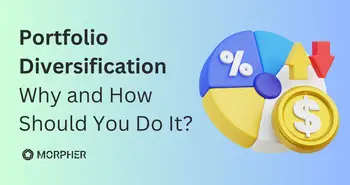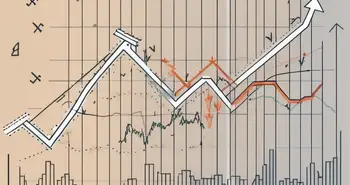Portfolio Turnover: How It Impacts Your Investment Returns

In the world of investing, maximizing returns is the ultimate goal. One key concept that plays a crucial role in achieving this goal is portfolio turnover. Understanding portfolio turnover and its impact on investment strategy can make a significant difference in your overall investment performance.
Defining Portfolio Turnover
The Basics of Portfolio Turnover
Portfolio turnover refers to the frequency with which securities within a portfolio are bought and sold over a given period of time. It is a measure of the trading activity within the portfolio. A high turnover indicates frequent buying and selling, while a low turnover suggests a more buy-and-hold approach.
Portfolio turnover is a key metric used by investors and fund managers to assess the level of trading activity within a portfolio. It provides insights into how actively the portfolio is managed and can offer clues about the investment strategy being employed. Understanding portfolio turnover is essential for investors looking to make informed decisions about their investments.
The Importance of Portfolio Turnover in Investment Strategy
Why does portfolio turnover matter? Well, it can directly impact your investment strategy in several ways. First and foremost, portfolio turnover affects transaction costs. With each buy and sell order, there are costs involved, such as brokerage commissions and bid-ask spreads. These costs can eat into your investment returns.
Additionally, portfolio turnover can have tax implications. When you sell securities at a profit, you may be subject to capital gains taxes. Therefore, high turnover can result in higher tax bills. On the other hand, low turnover can potentially reduce your tax liabilities.
Moreover, portfolio turnover can also impact the overall performance of a portfolio. High turnover can lead to increased volatility and risk, as frequent trading may expose the portfolio to market fluctuations and timing risks. On the contrary, low turnover strategies are often associated with a more stable and long-term approach, which may result in smoother returns over time.
The Impact of High Portfolio Turnover
Potential Benefits of High Turnover
While high portfolio turnover may incur costs, it can also offer potential benefits. One benefit is the ability to quickly respond to market conditions or take advantage of short-term trading opportunities. By actively buying and selling securities, you can potentially capitalize on market inefficiencies or changes in economic conditions.
Another benefit of high turnover is the potential for diversification. By trading frequently, you have the ability to spread your investments across different asset classes or sectors. This can help mitigate risks and enhance overall portfolio performance.
Moreover, high turnover can also provide investors with the opportunity to engage in tax-loss harvesting. This strategy involves selling investments at a loss to offset capital gains and reduce taxable income. By strategically managing your portfolio turnover, you can optimize tax efficiency and potentially increase after-tax returns.
Risks Associated with High Portfolio Turnover
Despite the potential benefits, high portfolio turnover comes with risks. One risk is increased trading costs, as mentioned earlier. These costs can erode your returns, especially if you frequently trade in and out of positions.
Another risk is the potential for making poor investment decisions based on short-term market fluctuations. High turnover may lead to impulsive trades driven by emotions rather than a well-thought-out investment strategy. This can increase the likelihood of losses and hinder long-term performance.
Furthermore, high turnover can also result in higher tax liabilities for investors. Short-term capital gains, which are generated from investments held for one year or less, are typically taxed at higher rates than long-term capital gains. Therefore, frequent trading activities associated with high turnover can lead to increased tax obligations and reduce overall net returns for investors.
The Impact of Low Portfolio Turnover
Advantages of Low Turnover
On the other end of the spectrum, low portfolio turnover has its own set of advantages. One significant advantage is reduced transaction costs. By reducing the frequency of buying and selling, you can minimize brokerage commissions and other trading-related expenses.
Low turnover also aligns with a long-term investment approach. It allows you to take advantage of compounding returns over time. Instead of chasing short-term gains, you focus on the underlying fundamentals of your investments and allow them to grow steadily.
Moreover, low turnover can lead to tax efficiency. When you hold onto investments for an extended period, you may benefit from long-term capital gains tax rates, which are typically lower than short-term capital gains tax rates. This tax advantage can enhance your overall investment returns in the long run.
Potential Drawbacks of Low Portfolio Turnover
While low turnover can be beneficial, it is not without drawbacks. One potential drawback is missed opportunities. By holding onto investments for the long term, you may miss out on short-term gains or fail to react quickly to changing market conditions.
Another drawback is the potential for stagnation. With low portfolio turnover, your investments may become concentrated in a few positions, leading to less diversification. This lack of diversification can increase your exposure to specific risks and limit potential returns.
Additionally, low turnover may result in underperformance during certain market conditions. In rapidly changing markets or during periods of high volatility, a strategy focused on long-term holdings may not be able to capitalize on short-term fluctuations or adjust to sudden shifts in the investment landscape.
Strategies for Maximizing Returns
Balancing Portfolio Turnover
Striking the right balance between high and low portfolio turnover is key. A balanced approach can be achieved by identifying your investment objectives, risk tolerance, and time horizon. Consider working with a financial advisor who can help align your portfolio turnover with your specific goals.
Timing and Portfolio Turnover
Timing also plays a crucial role in portfolio turnover. Attempting to time the market perfectly can be challenging, if not impossible. Instead, focus on a long-term investment strategy and make trades based on solid research and analysis rather than short-term market predictions.
Measuring Portfolio Turnover
Calculating Portfolio Turnover Rate
Measuring portfolio turnover is relatively straightforward. The portfolio turnover rate is typically expressed as a percentage and is calculated by dividing the total value of securities bought or sold within a specific period by the portfolio's average net asset value.
- Determine the total value of securities bought and sold within the period.
- Calculate the average net asset value of the portfolio by adding the beginning and ending values, and dividing by two.
- Divide the total value of securities bought and sold by the average net asset value of the portfolio.
- Multiply the result by 100 to obtain the turnover rate as a percentage.
Interpreting Portfolio Turnover Rate
The interpretation of portfolio turnover rate can vary depending on individual investment strategies and objectives. Generally, a higher turnover rate may suggest a more active investment approach, while a lower turnover rate indicates a more passive or buy-and-hold strategy.
As an experienced investor, I have witnessed both the benefits and drawbacks of portfolio turnover firsthand. While no strategy is foolproof, it's essential to weigh the potential gains against the associated costs and risks.
FAQ
Q: How does portfolio turnover impact investment returns?
A: Portfolio turnover can directly impact investment returns through transaction costs and potential tax implications. Higher turnover may increase costs and tax liabilities, while lower turnover can help reduce expenses.
Q: What is the recommended approach to portfolio turnover?
A: There is no one-size-fits-all approach to portfolio turnover. It depends on your investment goals, risk tolerance, and time horizon. A balanced approach that considers these factors is generally recommended.
Q: How can I measure portfolio turnover?
A: Portfolio turnover is measured using the turnover rate, which is calculated by dividing the total value of securities bought or sold within a specific period by the portfolio's average net asset value.
Q: What are the risks of high portfolio turnover?
A: Risks associated with high portfolio turnover include increased transaction costs and the potential for impulsive investment decisions driven by short-term market fluctuations.
Q: What are the advantages of low portfolio turnover?
A: Low portfolio turnover can reduce transaction costs, align with a long-term investment approach, and promote compounding returns over time.
Remember, finding the right balance in portfolio turnover is essential. By understanding the impact of turnover on your investment strategy and considering your long-term goals, you can maximize returns and navigate the ever-changing landscape of the financial markets with confidence.
Ready to optimize your investment strategy with a platform that aligns with your goals for low portfolio turnover and maximized returns? Look no further than Morpher, the revolutionary trading platform that offers zero fees, infinite liquidity, and a unique trading experience on the blockchain. Whether you're interested in traditional assets or exploring new markets like NFTs and sneakers, Morpher's fractional investing, short selling capabilities, and up to 10x leverage can enhance your trading potential. Take control of your investments with the safety and flexibility of the Morpher Wallet. Sign Up and Get Your Free Sign Up Bonus today, and join the future of trading with Morpher.

Disclaimer: All investments involve risk, and the past performance of a security, industry, sector, market, financial product, trading strategy, or individual’s trading does not guarantee future results or returns. Investors are fully responsible for any investment decisions they make. Such decisions should be based solely on an evaluation of their financial circumstances, investment objectives, risk tolerance, and liquidity needs. This post does not constitute investment advice.

Painless trading for everyone
Hundreds of markets all in one place - Apple, Bitcoin, Gold, Watches, NFTs, Sneakers and so much more.

Painless trading for everyone
Hundreds of markets all in one place - Apple, Bitcoin, Gold, Watches, NFTs, Sneakers and so much more.









